Do you have a question about the Honda 2003 CR-V and is the answer not in the manual?
Key recommendations for protecting occupants and ensuring safe vehicle operation.
An overview of the vehicle's safety systems like seat belts, airbags, and structural features.
Proper use, adjustment, and importance of seat belts for occupant safety.
Details on front and side airbags, their operation, and potential hazards.
Comprehensive instructions for safely restraining infants and children in the vehicle.
Warnings about carbon monoxide and the location of safety labels on the vehicle.
Location of controls, indicator lights, gauges, and steering column controls.
Information on key systems, door locks, and seat adjustments for comfort and safety.
Operation of power windows, moonroof, mirrors, and interior lights for convenience.
How to use the climate control system for heating, cooling, and defrosting.
Instructions for operating the radio, cassette, CD player, and CD changer.
How to set, change, and cancel cruise control for highway driving.
Guidance on initial vehicle break-in and recommended gasoline types and octane ratings.
Instructions for filling the fuel tank, opening the hood, and checking fluid levels.
Tips for improving fuel economy through vehicle maintenance and driving techniques.
Instructions and precautions for safely loading, securing, and distributing cargo in the vehicle.
Tips for safe driving, including handling, speed, and off-highway operation.
Daily checks and adjustments required before driving the vehicle for safety.
Step-by-step instructions for starting the engine in various conditions, including cold weather.
How to operate the automatic and manual transmissions, including shift points and modes.
Precautions and techniques for driving safely in rain, fog, snow, and icy conditions.
Guidelines for towing trailers, including load limits, equipment, and safe driving practices.
Explains why regular maintenance is crucial for safety, performance, and pollution control.
Outlines service schedules for normal/severe conditions and owner checks for fluids, tires, and lights.
Procedures for engine oil, filter, and coolant checks, additions, and replacements.
Guidance on windshield washers, drive belts, tires, wheels, and exterior lights maintenance.
Step-by-step instructions for safely changing a flat tire, including tool usage and spare tire removal.
Troubleshooting for engine starting problems, jump starting, and battery checks.
Meaning and action for the Malfunction Indicator Lamp and Brake System Indicator.
Procedures for checking/replacing fuses and information on emergency towing services.
Details on vehicle dimensions, weights, engine capacities, identification numbers, and specifications.
Explanation of tire quality grading and information on oxygenated fuels.
How the vehicle's emissions control systems, including PGM-FI and catalytic converters, function.
How to contact Honda for assistance and information needed for inquiries.
Overview of various warranties, including new vehicle, emissions, seat belt, and replacement parts.
Procedures for reporting vehicle safety defects to NHTSA and Honda.
Information on how to order official Honda service and repair manuals.
Key recommendations for protecting occupants and ensuring safe vehicle operation.
An overview of the vehicle's safety systems like seat belts, airbags, and structural features.
Proper use, adjustment, and importance of seat belts for occupant safety.
Details on front and side airbags, their operation, and potential hazards.
Comprehensive instructions for safely restraining infants and children in the vehicle.
Warnings about carbon monoxide and the location of safety labels on the vehicle.
Location of controls, indicator lights, gauges, and steering column controls.
Information on key systems, door locks, and seat adjustments for comfort and safety.
Operation of power windows, moonroof, mirrors, and interior lights for convenience.
How to use the climate control system for heating, cooling, and defrosting.
Instructions for operating the radio, cassette, CD player, and CD changer.
How to set, change, and cancel cruise control for highway driving.
Guidance on initial vehicle break-in and recommended gasoline types and octane ratings.
Instructions for filling the fuel tank, opening the hood, and checking fluid levels.
Tips for improving fuel economy through vehicle maintenance and driving techniques.
Instructions and precautions for safely loading, securing, and distributing cargo in the vehicle.
Tips for safe driving, including handling, speed, and off-highway operation.
Daily checks and adjustments required before driving the vehicle for safety.
Step-by-step instructions for starting the engine in various conditions, including cold weather.
How to operate the automatic and manual transmissions, including shift points and modes.
Precautions and techniques for driving safely in rain, fog, snow, and icy conditions.
Guidelines for towing trailers, including load limits, equipment, and safe driving practices.
Explains why regular maintenance is crucial for safety, performance, and pollution control.
Outlines service schedules for normal/severe conditions and owner checks for fluids, tires, and lights.
Procedures for engine oil, filter, and coolant checks, additions, and replacements.
Guidance on windshield washers, drive belts, tires, wheels, and exterior lights maintenance.
Step-by-step instructions for safely changing a flat tire, including tool usage and spare tire removal.
Troubleshooting for engine starting problems, jump starting, and battery checks.
Meaning and action for the Malfunction Indicator Lamp and Brake System Indicator.
Procedures for checking/replacing fuses and information on emergency towing services.
Details on vehicle dimensions, weights, engine capacities, identification numbers, and specifications.
Explanation of tire quality grading and information on oxygenated fuels.
How the vehicle's emissions control systems, including PGM-FI and catalytic converters, function.
How to contact Honda for assistance and information needed for inquiries.
Overview of various warranties, including new vehicle, emissions, seat belt, and replacement parts.
Procedures for reporting vehicle safety defects to NHTSA and Honda.
Information on how to order official Honda service and repair manuals.
| Brand | Honda |
|---|---|
| Model | 2003 CR-V |
| Category | Automobile |
| Language | English |


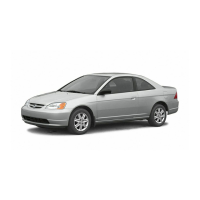
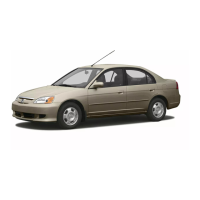

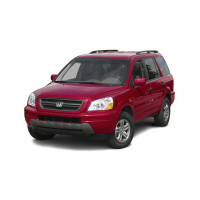



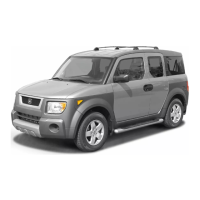

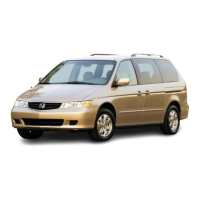
